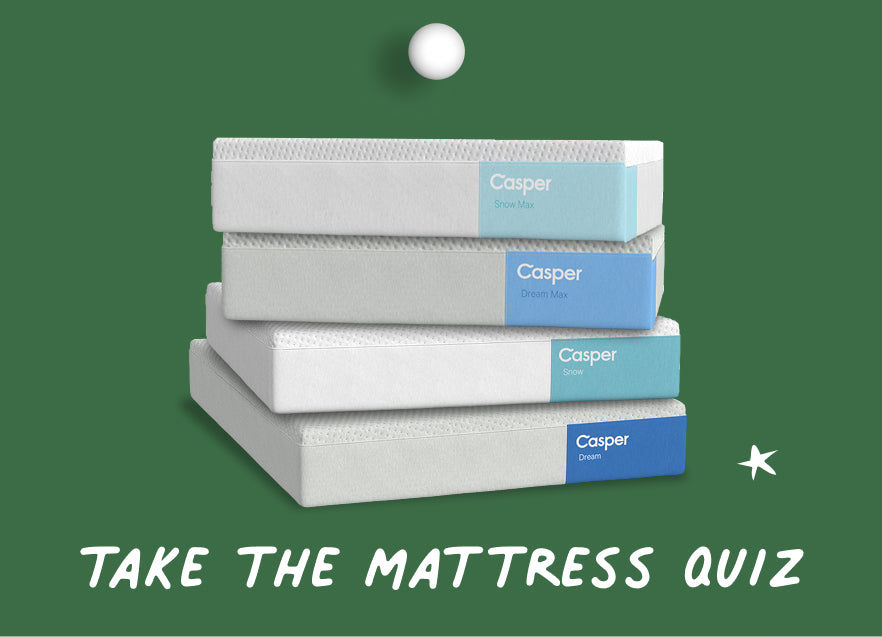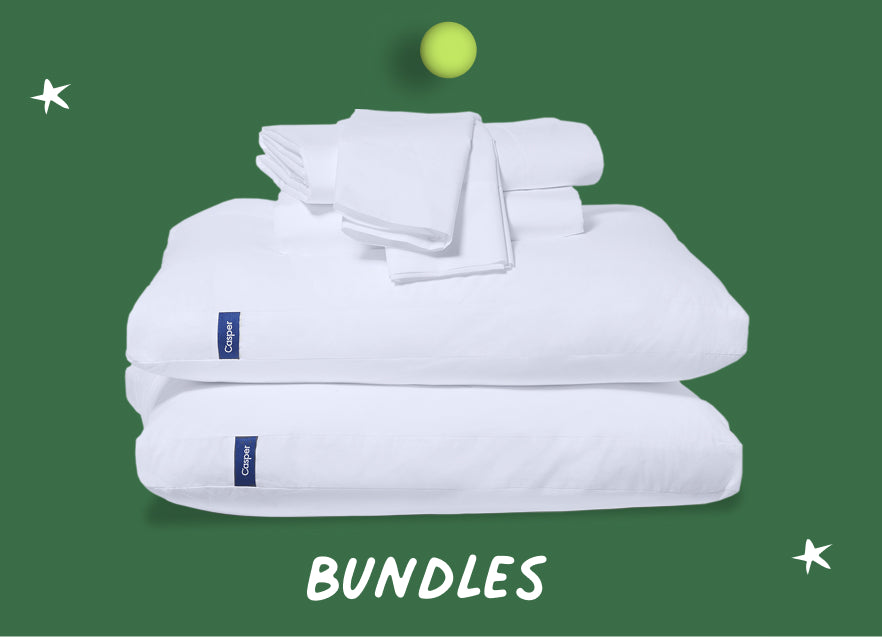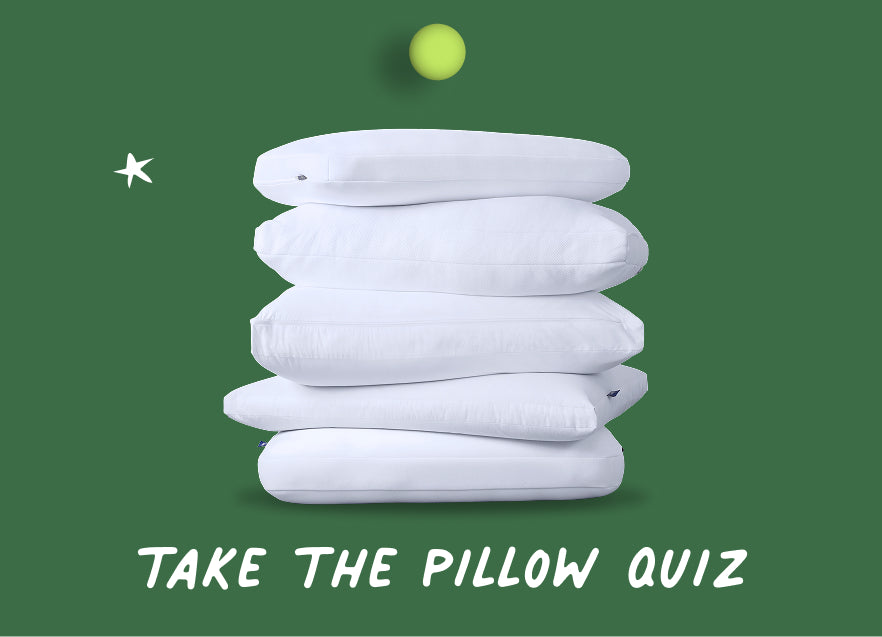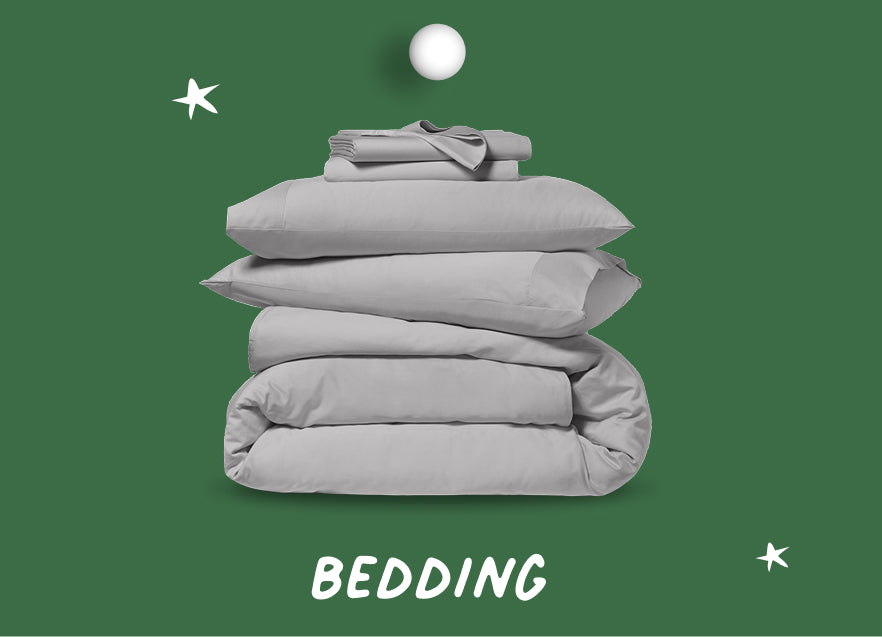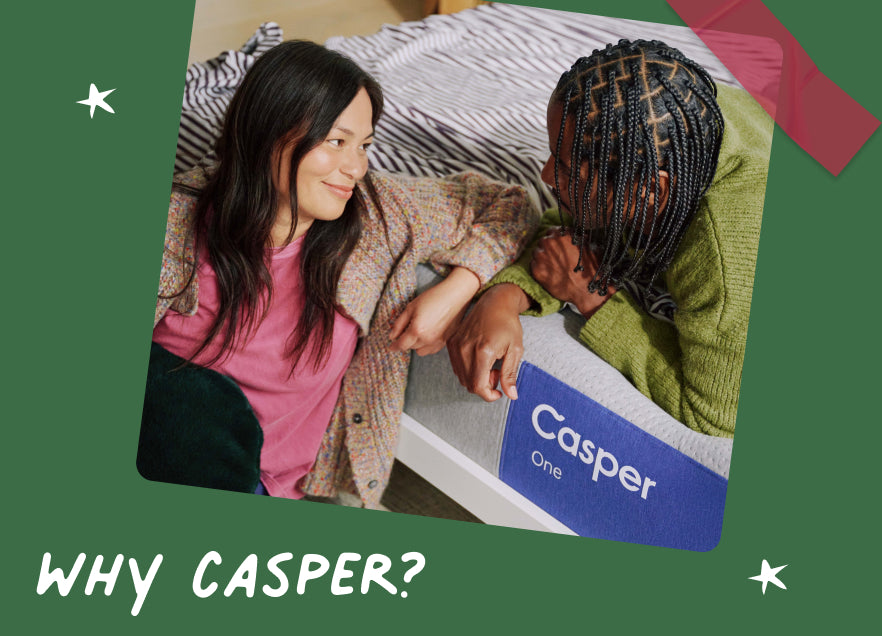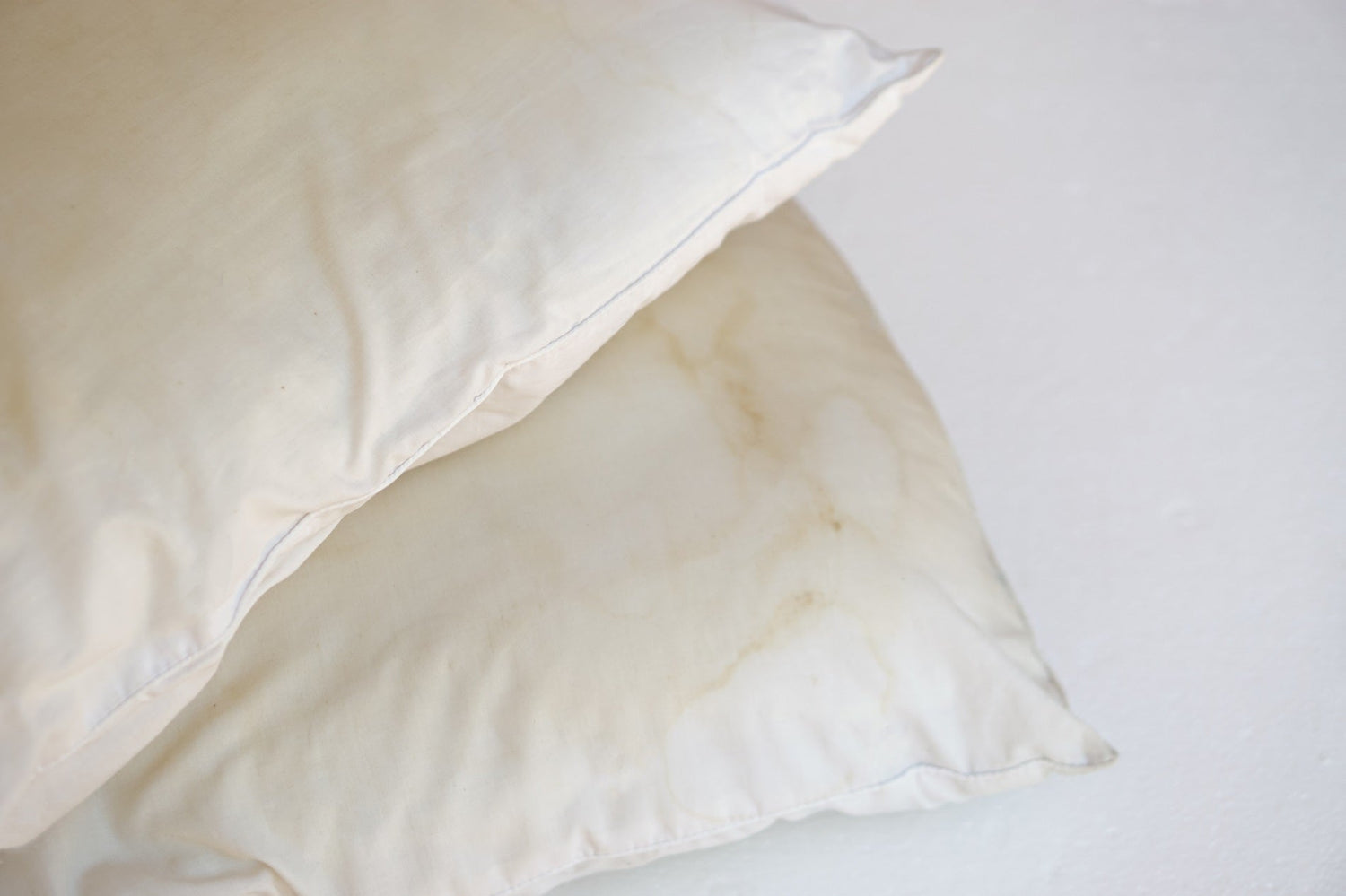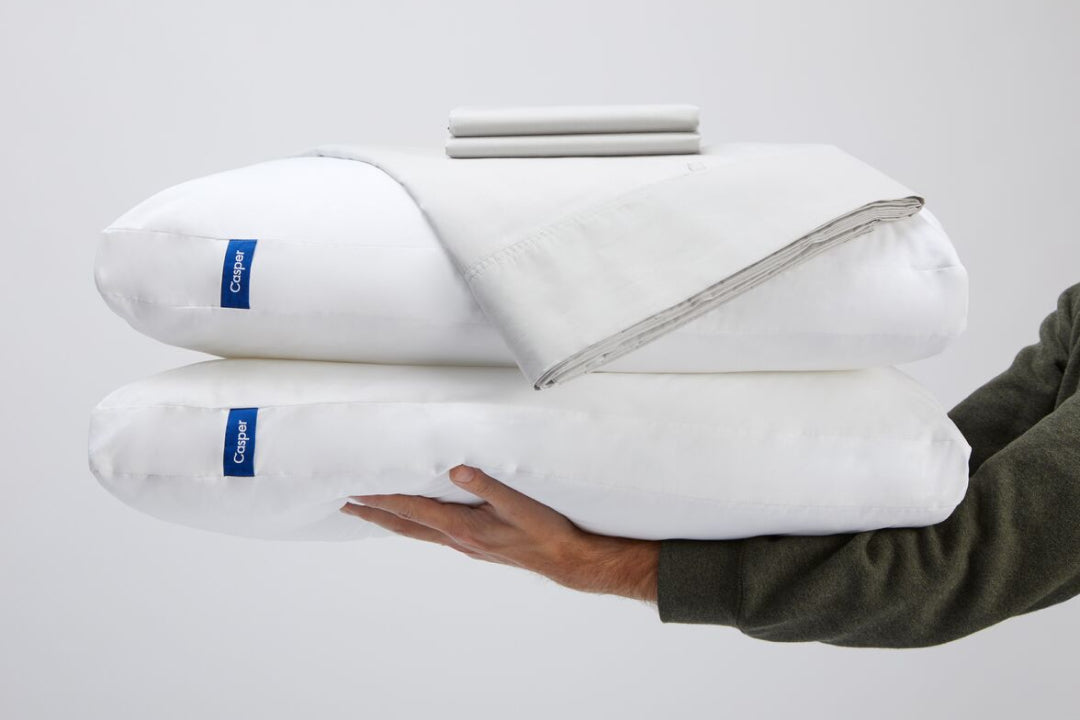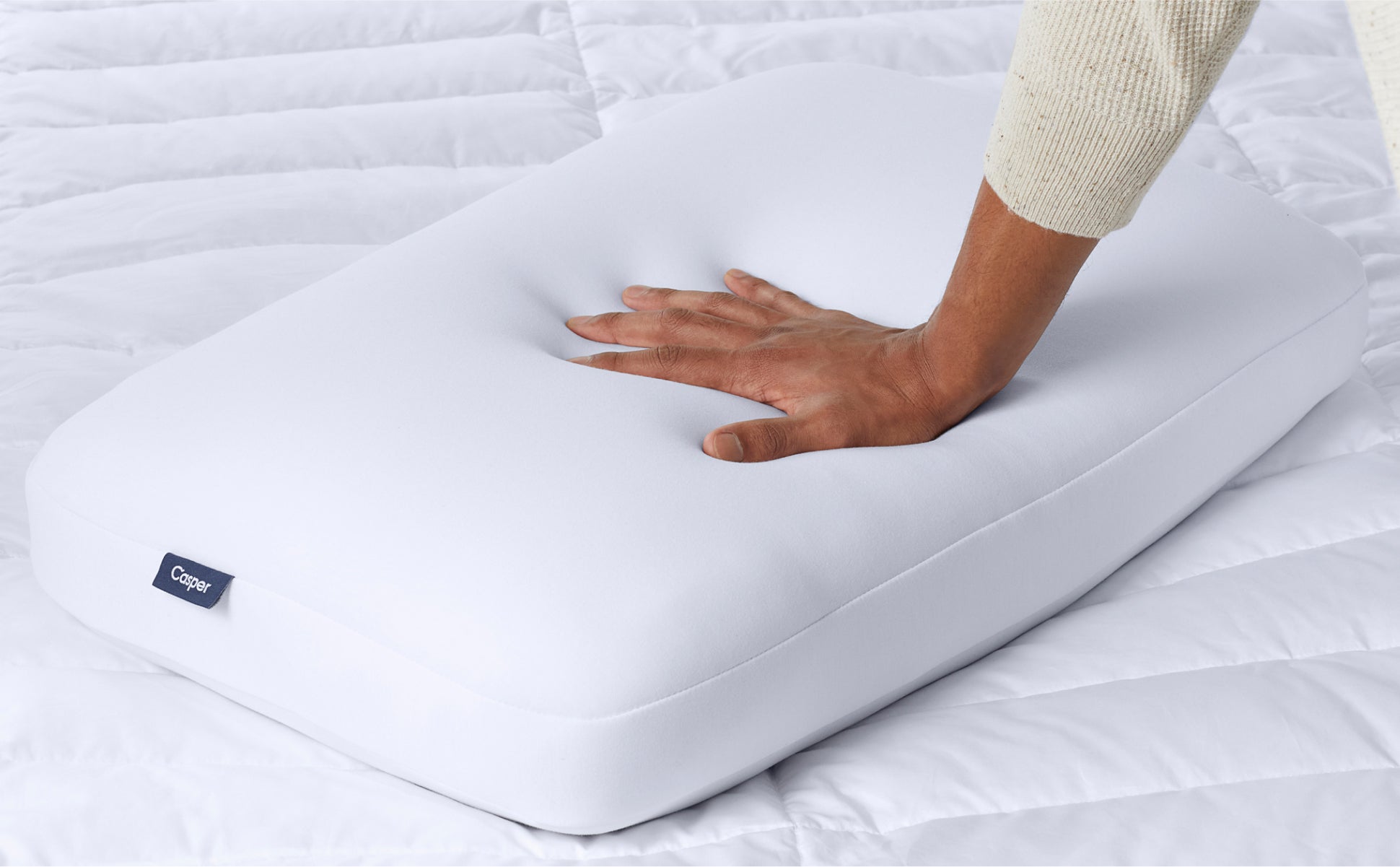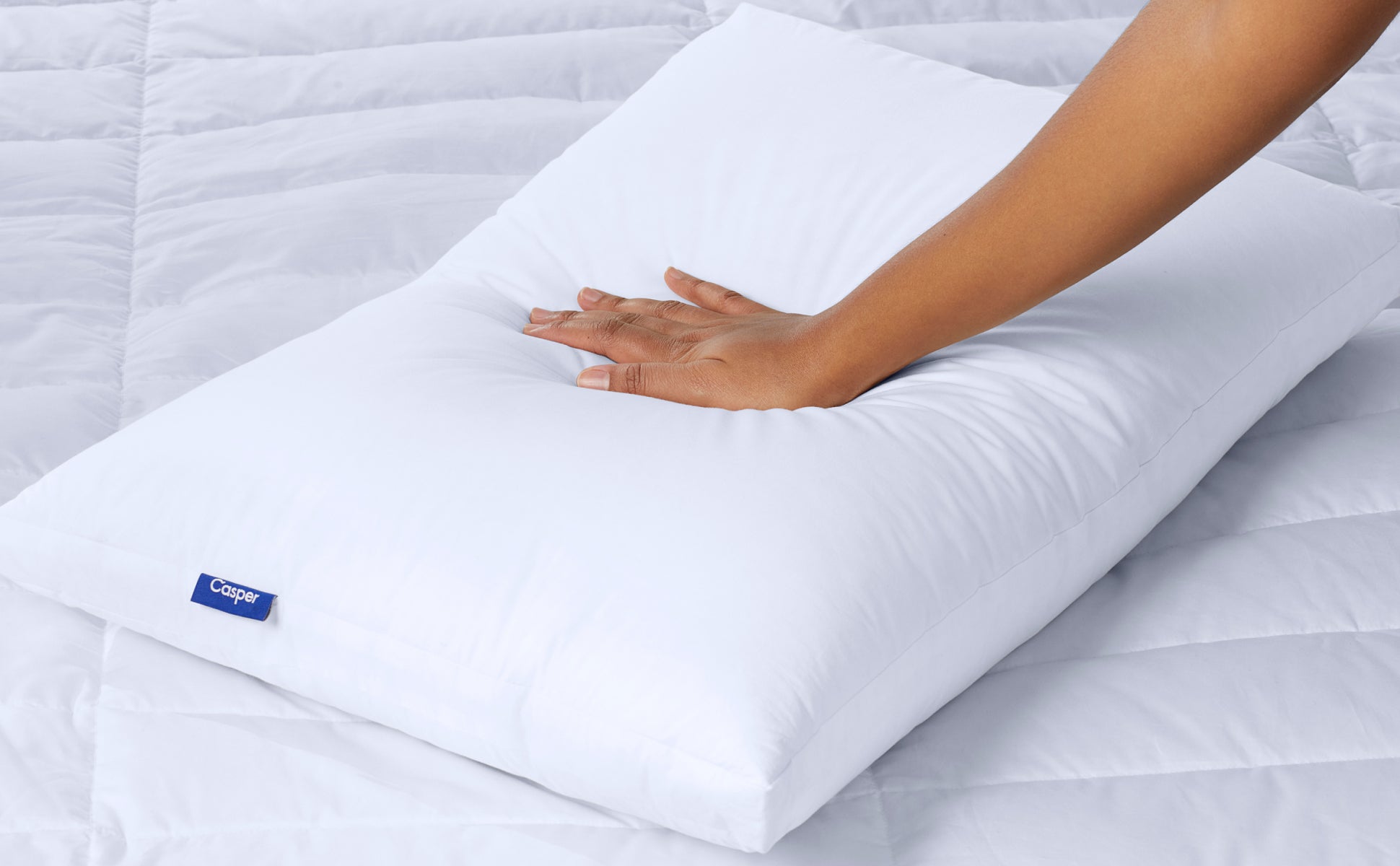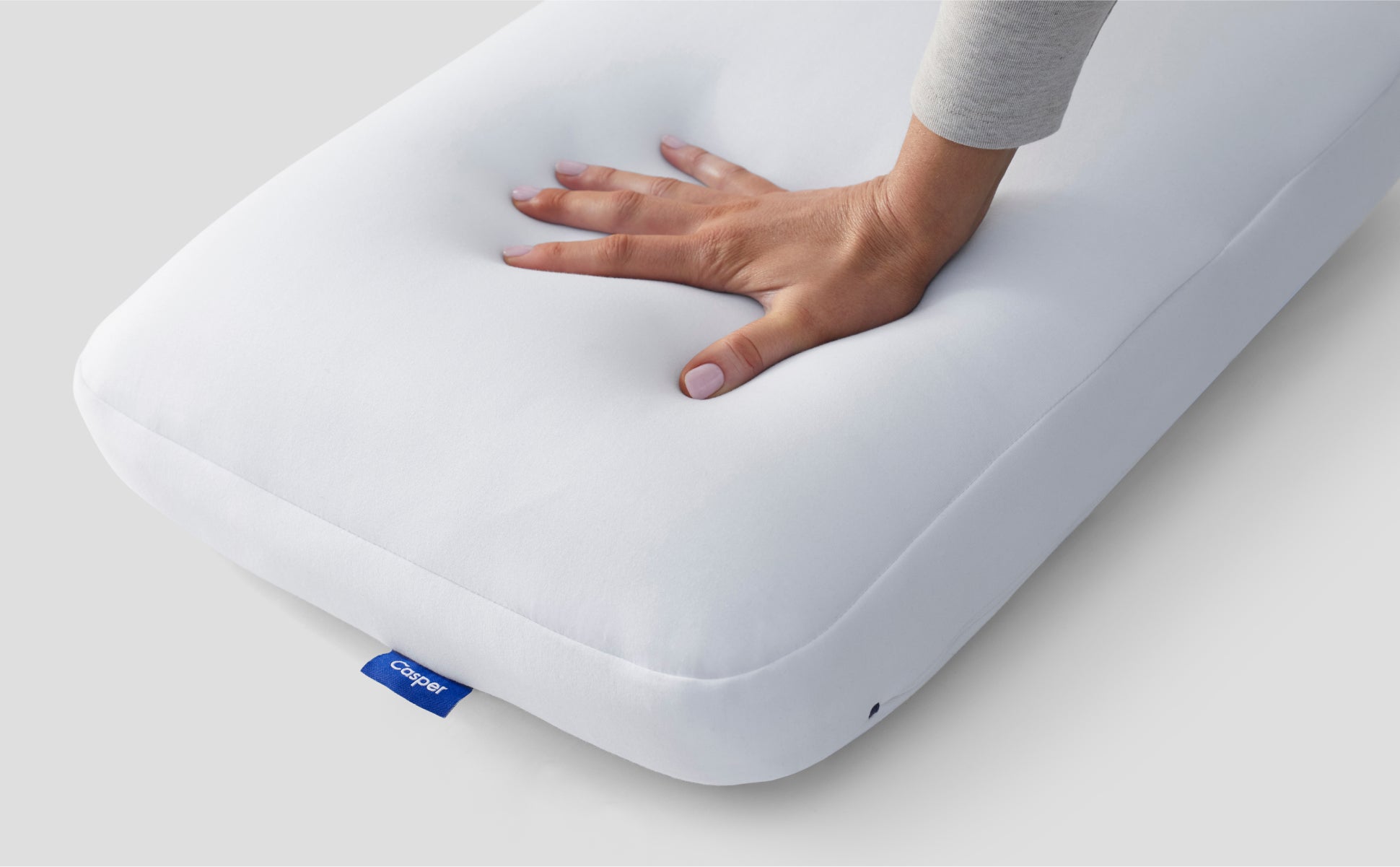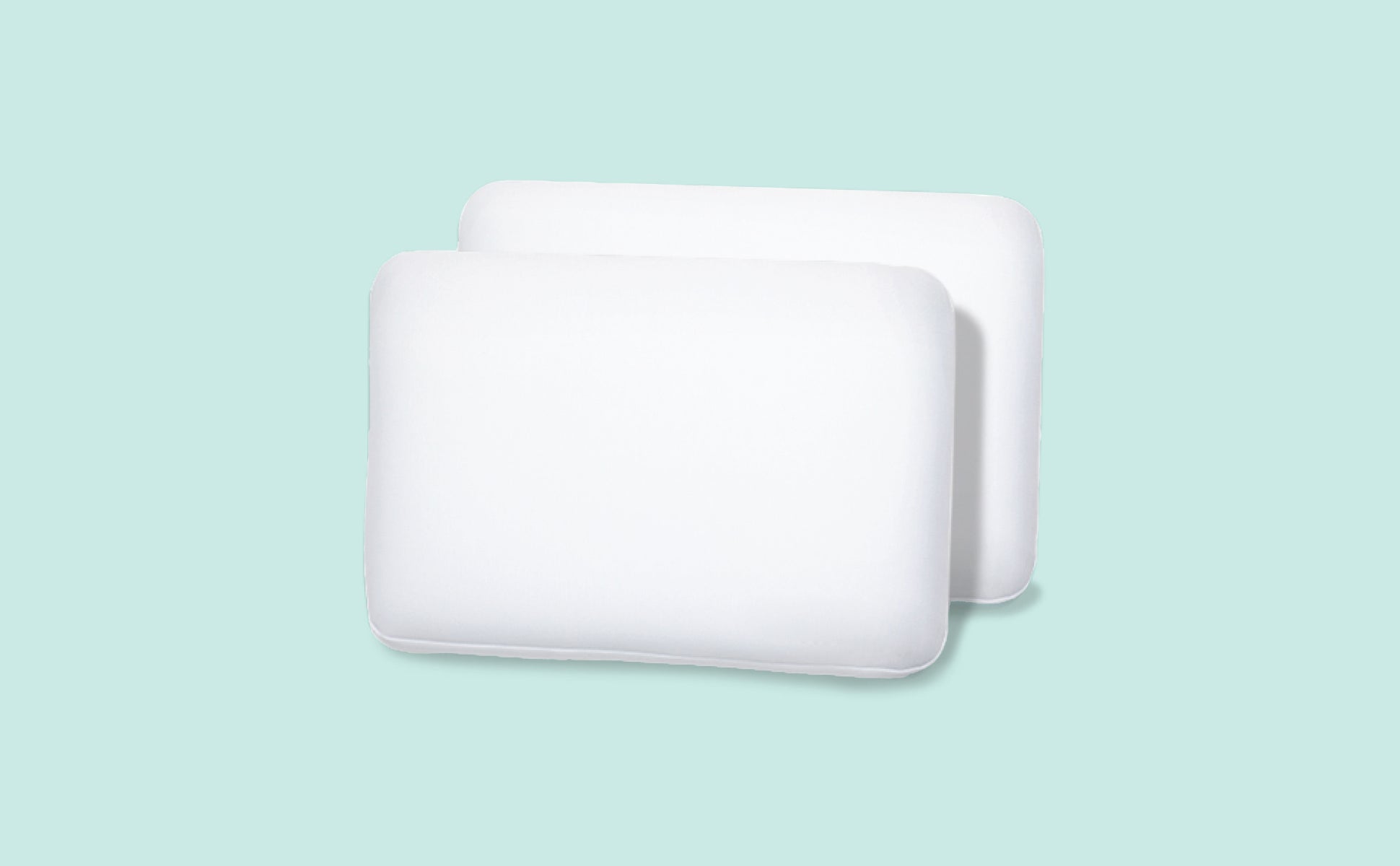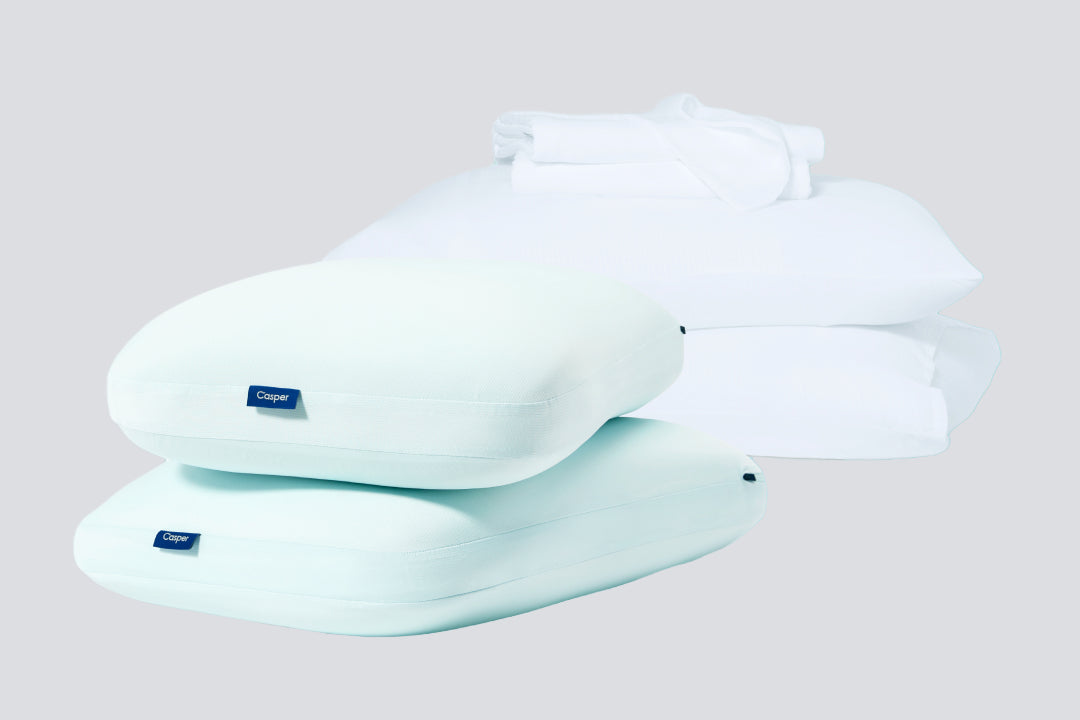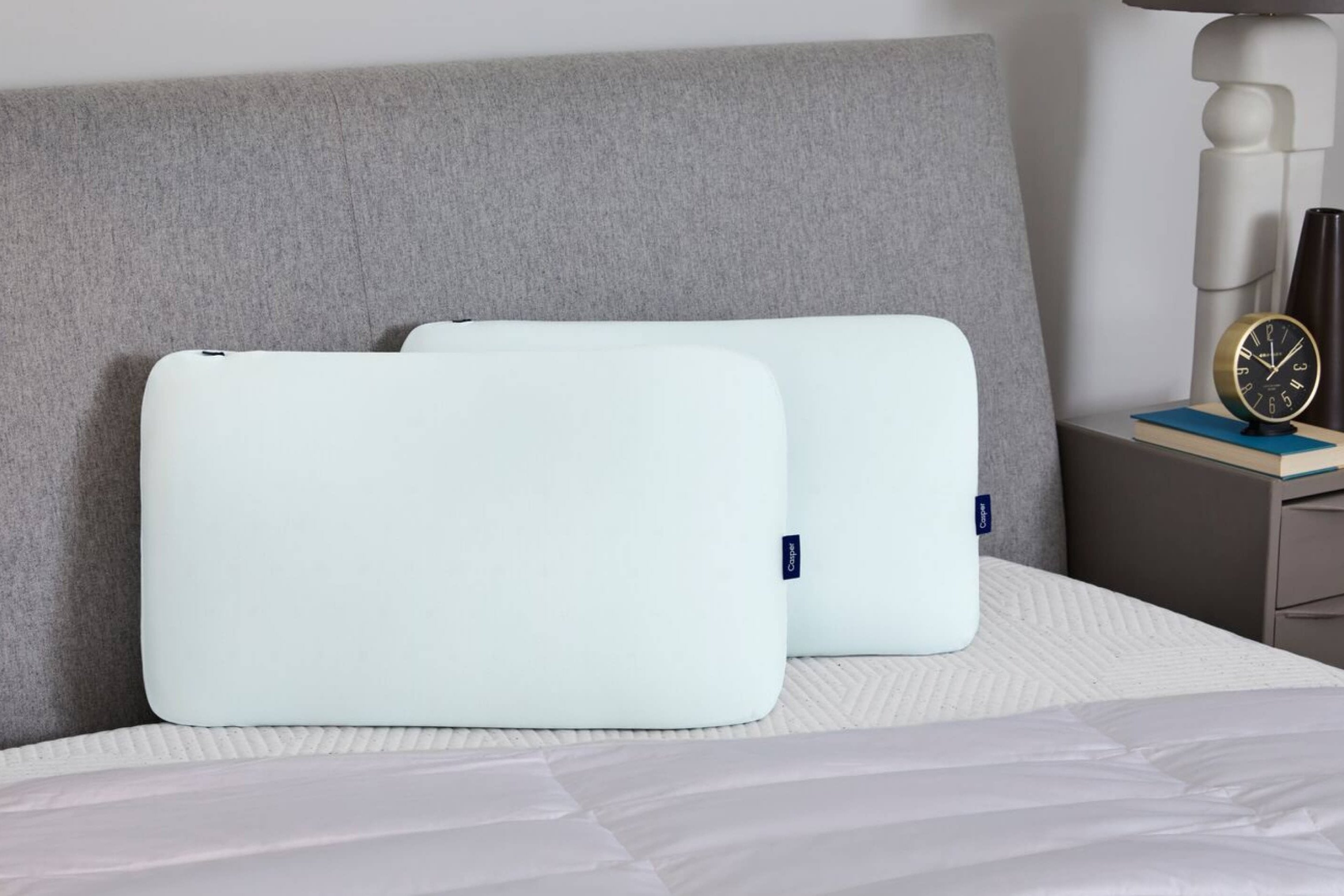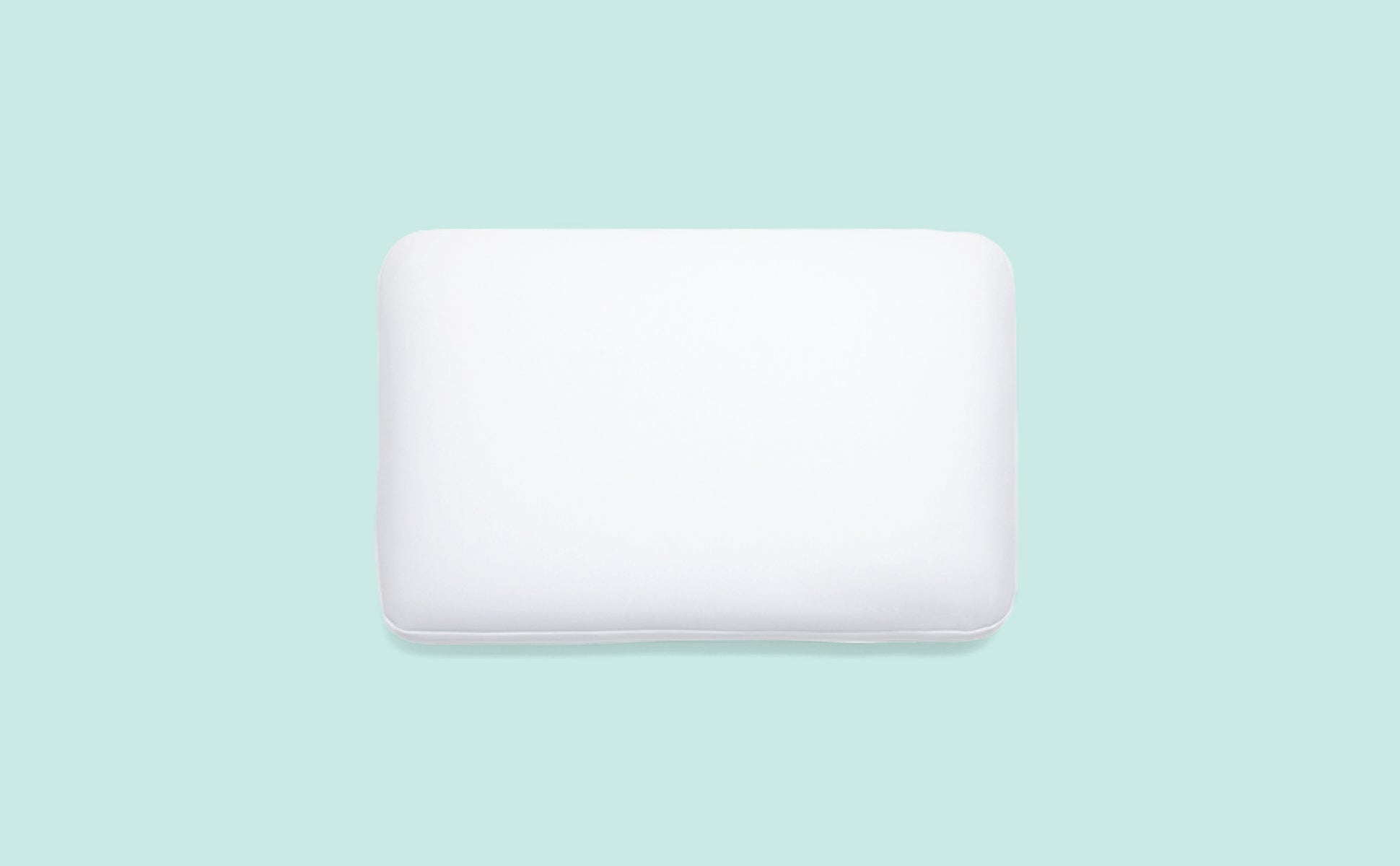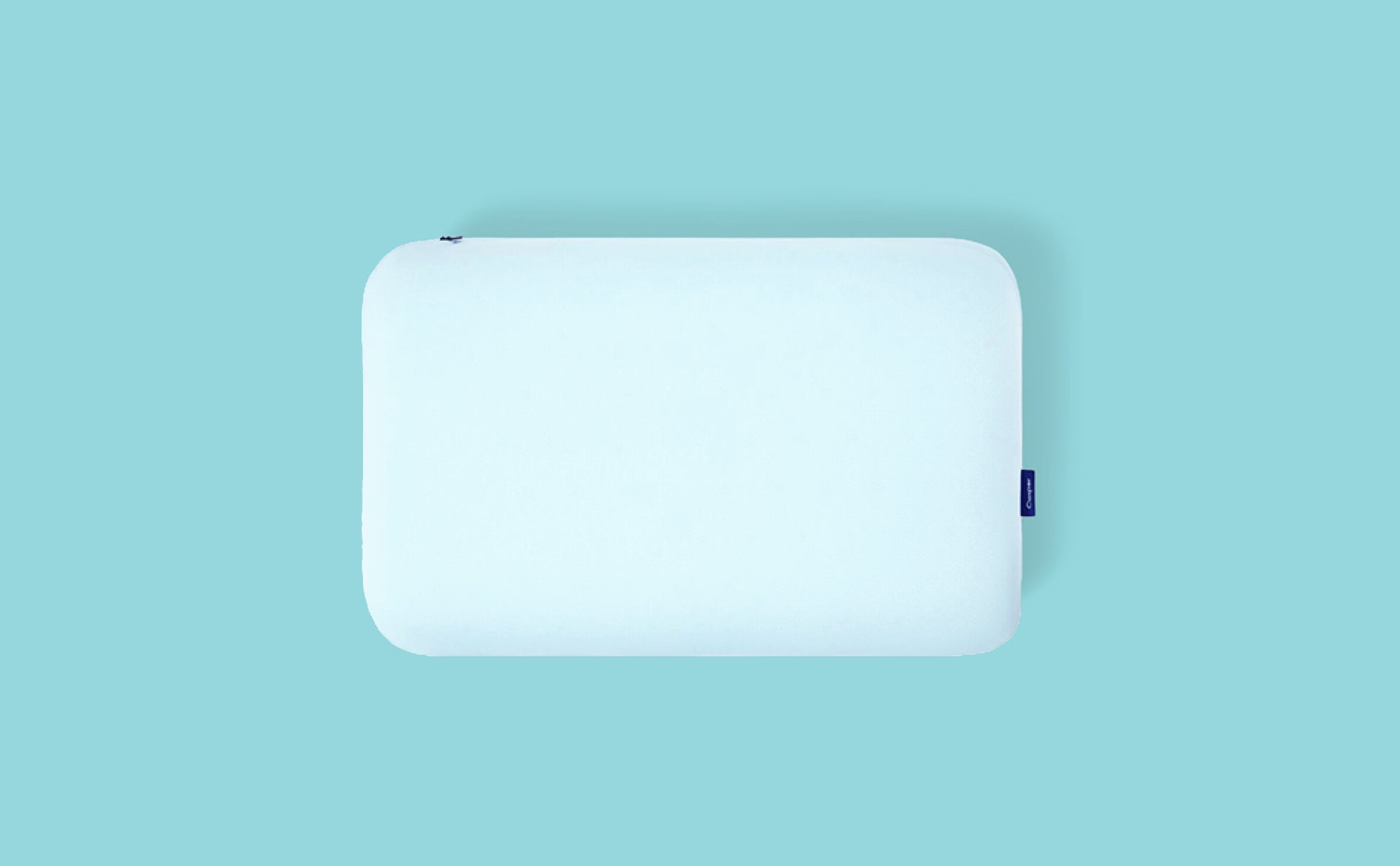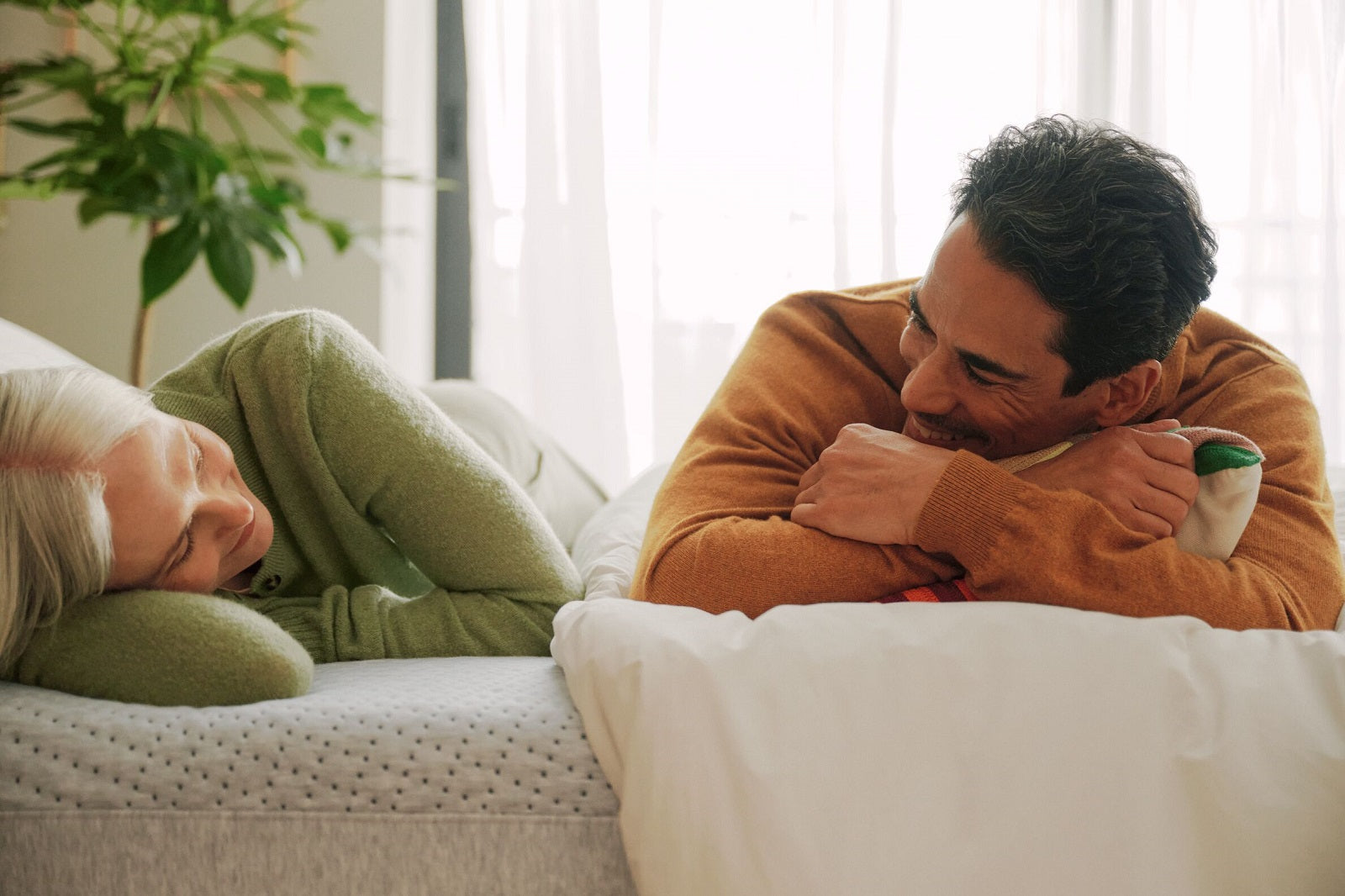Pillows can turn yellow due to skincare products, sleeping with wet hair, sweat, saliva, oils, and other residues. There are many ways to prevent this and get rid of discoloration, including laundering methods and homemade stain-removal solutions.
Regularly cleaning your pillows and bed linens can make them last longer and help you maintain a healthy sleeping environment. Still, discoloration can happen, often in the form of yellow stains. Luckily, there are ways to remove these stains and prevent yellowing from occurring in the first place.
So, why do pillows turn yellow? We'll go over all the possible reasons, plus several solutions to the problem.
The Science Behind Yellow Pillow Stains
Yellowing is usually a result of moisture oxidizing—oxidation is a chemical reaction that happens when a substance is exposed to air.1 The moisture can be any number of things, like sweat, skincare products, natural oil from your skin, sebum (the waxy, oily stuff in pores), saliva, excess humidity in the room, spilled liquids, or going to bed with wet hair.2
Moisture brings proteins, salts, and oils onto (or into) the pillow, and then exposure to air dries out the dampness. Once dry, the oxidizing effect might discolor the fabric cover or fill materials. This discoloration will often show up as yellowish or golden-brown stains.3
Moisture + Oxidation
Night sweats are common.4 Waking up occasionally with damp sheets or a drenched pillow may not result in yellow stains, but over time, repeated moisture exposure can change the color of the pillow fabric and contribute to the buildup of yellow stains from your pillows. Through oxidation, the salt, enzymes, proteins, and bacteria in sweat not only leave behind funky odors but also visible stains on pillows.5
Body Chemistry Factors
A person's unique body chemistry can affect the severity of yellowing pillows or how quickly they discolor. For instance, chromhidrosis is a condition where sweat glands have more oxidizing pigments than normal, causing pores to secrete colored sweat, body oils, and sebum. Instead of clear, these bodily substances can show up as yellow, brown, or even green or blue, and also contribute to discoloration, causing yellow stains.6
There's also a condition called pseudochromhidrosis, where clear sweat changes color after it's secreted from pores when exposed to bacteria. These sweat disorders are rare, but they can lead to yellowing pillows and contribute to the need for washing your pillows more frequently.7
While yellow-stained pillows don't necessarily mean you have chromhidrosis, your skin or sweat glands might produce specific enzymes, proteins, or bacteria that create a perfect storm for discoloration.8

4 Primary Causes of Pillow Yellowing
Let's go over the most common sources of yellow stains on pillows, along with how and why they sometimes sneak past the pillowcase barrier.
1. Body Thermoregulation + Sweat
Your body works to keep you at a comfortable temperature throughout the night (a process called thermoregulation). In an attempt to cool you down in a warm room or when the humidity is high, your body will produce sweat and evaporate moisture while you sleep.9
Some estimate this moisture loss is up to a liter per night. So, you can see how even one night of sweaty sleep—let alone chronic night sweats—could leave you with yellowish pillows.
2. Natural Body Oils + Skincare Products
Beyond sweat, natural oils and sebum from your skin can make their way onto bedding fabrics, sometimes seeping through a pillowcase and into the fill material. The same can happen with products you apply to your skin, especially those used close to bedtime that haven't fully absorbed, like lotions, serums, and creams.
Certain personal hygiene products, such as aluminum deodorants, can keep skin dry but still leave marks on fabrics once oxidized. Many antiperspirants aren't very water-soluble, which can make them hard to clean.10
3. Saliva + Drooling
The saliva in your mouth can also contain enzymes and bacteria that discolor fabrics. This is more of an issue for those who tend to drool at night or sleep on their stomachs with their mouth open. It can be worse for folks who don't have good oral hygiene habits, as they might have an imbalance of mouth bacteria.11
4. Environmental Factors
Any excess moisture can contribute to pillow discoloration. As mentioned, this could be excess humidity in your bedroom or going to sleep with damp hair, even if it's totally clean and free of styling products, which can cause yellow stains on your pillows. If this happens often and your pillows don't have a chance to dry out, it might even lead to mold or mildew.12

5 Effective Cleaning Methods for Yellowing Pillows
So, now that you have an idea of what could be making your pillows turn yellow, what can you do about it to effectively remove these pesky yellow stains? Here's what to try.
1. Machine-Washing Techniques
Check which components of your pillows are machine washable and always follow the care instructions from the manufacturer. Most memory foam pillows are not machine washable, and only the covers of Casper pillows are washable—don't launder the core. Remove or separate these pieces and put them in your washing machine to prevent allergens from building up and seeping into your pillow.
Use hot water and an enzymatic detergent to wash the pillows. This type of laundry soap contains plant-derived or synthesized enzymes that break down the molecules in fabric stains so they can be washed away. Adding distilled white vinegar to the mix into the fabric softener dispenser or rinse cycle can help with extra-stubborn marks and is a great option for washing your pillows effectively. You might want to soak everything in water for up to an hour first (or use a pre-soak setting on your washing machine) to help loosen the stains.13
If your pillow is dryer-friendly, toss in a few wool dryer balls or tennis balls to prevent clumping and help them fluff up. Remember to dry your pillows thoroughly to prevent mildew and nasty smells. Regular washing and using a pillow protector can help keep your pillows clean and prevent discoloration from sweat and oils.
Learn more about how to wash pillows in our comprehensive blog.
2. Baking Soda + Vinegar
Baking soda and vinegar can be a powerful combo in the fight against yellowing pillows.
Mix equal parts baking soda with clean water to create a paste. Use the paste to pre-treat your pillows, applying it to the stains and letting it sit for up to 30 minutes. Then saturate a clean cloth with distilled white vinegar and use that to blot the marks before tossing your pillow covering or insert in the wash.14
3. Hydrogen Peroxide Solution
You can also combine equal parts hydrogen peroxide and warm water to create a gentle bleaching solution that helps to keep pillows looking fresh.
Pour the solution into a spray bottle and spritz it onto the yellowing stains in an even coating without getting the pillow too wet. Let it sit for an hour or more near an open window or in another clean area with direct sunlight exposure. The combination of UV (ultraviolet) light with hydrogen peroxide can have a brightening effect on fabrics and other materials.15
4. Lemon Juice + Vinegar
Lemon juice is used in many DIY stain-removing solutions. Combine it with white vinegar or water to create a mild bleaching solution with natural brightening effects. As with the hydrogen peroxide solution, you can spritz the mixture onto your pillows and let them sit in direct sunlight for about an hour.16
5. Oxygen-Based Bleach (Chlorine-Free)
You can also use oxygen (chlorine-free) bleach to get rid of yellow stains, ensuring you maintain the life of your pillows. Made with sodium percarbonate or hydrogen peroxide, this type of bleach isn't as strong or fumey as chlorine bleach, but it can still do excellent work correcting discoloration and lifting dark yellowish-brown marks from fabrics, fiber, and foam.17
Just be sure to follow the directions on the label!

Prevention Strategies
What can you do to keep your pillows from turning yellow in the first place? The best prevention strategies involve keeping moisture and oils away through smart barriers, bedtime habits, and a strategic cleaning routine.
Pillow Protectors
Consider using a pillow protector. Similar to a mattress protector, this acts as a protective casing against sweat, spilled liquids, oils, and other staining substances. Look for one that's machine-washable and breathable but features a tight weave (3 to 4 microns) to help prevent moisture from getting in.
Sleep Hygiene Practices
Always take off your makeup and let your hair dry thoroughly before lying your head on your pillow to help keep pillows clean and free of yellow stains. If possible, try to do your evening skincare routine at least an hour before going to bed to give everything a chance to absorb into your skin.
Cooler Sleeping Environment
Keeping your bedroom cool at night is good for multiple reasons. It can help you fall asleep and stay asleep while preventing you from getting too hot. By helping regulate your body temperature, a climate-controlled sleeping environment will prevent you from sweating so much at night and reduce how much moisture your pillows are exposed to, which causes them to turn yellow over time.9
Pillow Maintenance
We recommend washing your pillowcases at least once a week and your pillow protector at least once a month.
Check the care label for your pillow inserts to see if they can be machine-washed. If not, use one of the homemade cleaning solutions above to freshen them up and remove stains periodically.
When to Replace Your Pillow
Knowing how to prevent and remove stains from your bed pillows will help you get the most out of them. But knowing when to replace them with new ones is also important.
Warning Signs
If your bed pillows have persistent stains and discoloration, or odors that can't be lifted despite your best efforts with washing methods or brightening solutions, it might be time to let them go. Know that moisture-laden pillows can harbor bacteria and possibly mold growth, while old ones can be filled with dust, pet dander, and other allergens, which can contribute to yellow stains and the overall degradation of your pillows, and the quality of your sleep.
Another sign your pillow needs replacing? It no longer offers the support or loftiness you need to sleep comfortably without waking up with neck pain. To check, do the fold test: Fold your pillow in half, hold it in place for a minute or so, then let go. If it takes a while to reform to its original shape, there's a good chance your pillow lacks spine-aligning support, which can impact your sleep health.
Replacement Timeline
Generally speaking, bed pillows should be switched out every one to two years. Even those that still maintain their original shape after two years should be replaced for hygienic reasons, especially if they start to turn yellow. If you suffer from indoor allergies, you might want to swap them out more frequently.
Explore Casper Pillows for Better Sleep
From perfectly balanced hybrids to classic all-foam designs and fluffy fiber options, our collection of bed pillows has something for everyone. You can count on all-night breathability and supportive construction that keeps your neck aligned. What's more, Casper pillow covers are all removable and machine-washable, making them easy to keep clean and stain-free.
We also have premium mattresses, bed sheets, and all the other ingredients that go into a great night's sleep.
Sources:
- Review of Progress in Coloration and Related Topics. A study on the advanced oxidation of a cotton fabric by ozone. https://www.researchgate.net/publication/230364003_A_study_on_the_advanced_oxidation_of_a_cotton_fabric_by_ozone
- Tom's Guide. 7 reasons why your mattress and pillow are turning yellow — and how to tell if they're still safe to sleep on. https://www.tomsguide.com/wellness/mattresses/yellow-stains-on-mattress-and-pillow-causes-and-how-to-get-them-out
- Fibers and Polymers. Populations of Malodor-forming Bacteria and Identification of Volatile Components in Triolein-soiled Cotton Fabric. https://www.researchgate.net/publication/257775979_Populations_of_Malodor-forming_Bacteria_and_Identification_of_Volatile_Components_in_Triolein-soiled_Cotton_Fabric
- Journal of Family Practice. Prevalence of night sweats in primary care patients: an OKPRN and TAFP-Net collaborative study. https://pubmed.ncbi.nlm.nih.gov/12019054/
- Microorganisms. Biological and Chemical Processes that Lead to Textile Malodour Development. https://pmc.ncbi.nlm.nih.gov/articles/PMC7692034/
- National Center for Biotechnology Information (NCBI). Chromhidrosis. https://www.ncbi.nlm.nih.gov/books/NBK554395/
- Indian Dermatology Online Journal. Yellow pseudochromhidrosis in a young female. https://pmc.ncbi.nlm.nih.gov/articles/PMC5297270/
- Journal of Investigative Dermatology. A Functional ABCC11 Allele Is Essential in the Biochemical Formation of Human Axillary Odor. https://www.jidonline.org/article/S0022-202X(15)34683-2/fulltext
- Nature and Science of Sleep. Effects of Fluid Intake on Sleep Duration and Quality Among Healthy Adults. https://www.nature.com/articles/s41598-023-37407-3
- IOP Conference Series Materials Science and Engineering. A novel washing algorithm for underarm stain removal. https://www.researchgate.net/publication/320940190_A_novel_washing_algorithm_for_underarm_stain_removal
- Medicina (Kaunas, Lithuania). A Comparative Study of Antioxidative Activity of Saliva in Children and Young Teenagers with and without Gingivitis. https://pmc.ncbi.nlm.nih.gov/articles/PMC8228018/
- Building and Environment. Modelling mould growth in domestic environments using relative humidity and temperature. https://www.sciencedirect.com/science/article/pii/S0360132321009756
- International Journal of Engineering Research & Technology (IJERT). A Comparative Study of Sustainable and Commercial Stain Removers on Textiles. https://www.ijert.org/a-comparative-study-of-sustainable-and-commercial-stain-removers-on-textiles
- WikiHow. How to Remove Yellow Stains from Your Pillows. https://www.wikihow.com/Whiten-Yellowed-Pillows
- Journal of Silicate Based and Composite Materials. Creation of "necessary" mixtures of baking soda, hydrogen peroxide and warm water as a strategy for modernization bleaching cleaners of ceramic. https://epitoanyag.org.hu/static/upload/10.14382_epitoanyag-jsbcm.2020.6.pdf
- Scientific Research Journal. Comparison between Homemade Stain Remover and Commercial Stain Remover for Textiles. https://www.researchgate.net/publication/368050749_Comparison_between_Homemade_Stain_Remover_and_Commercial_Stain_Remover_for_Textiles
- Indonesian Journal of Chemical Science and Technology (IJCST). Bleach Effectively in Removes The Stubborn Stains. https://www.researchgate.net/publication/348571011_Bleach_Effectively_in_Removes_The_Stubborn_Stains

